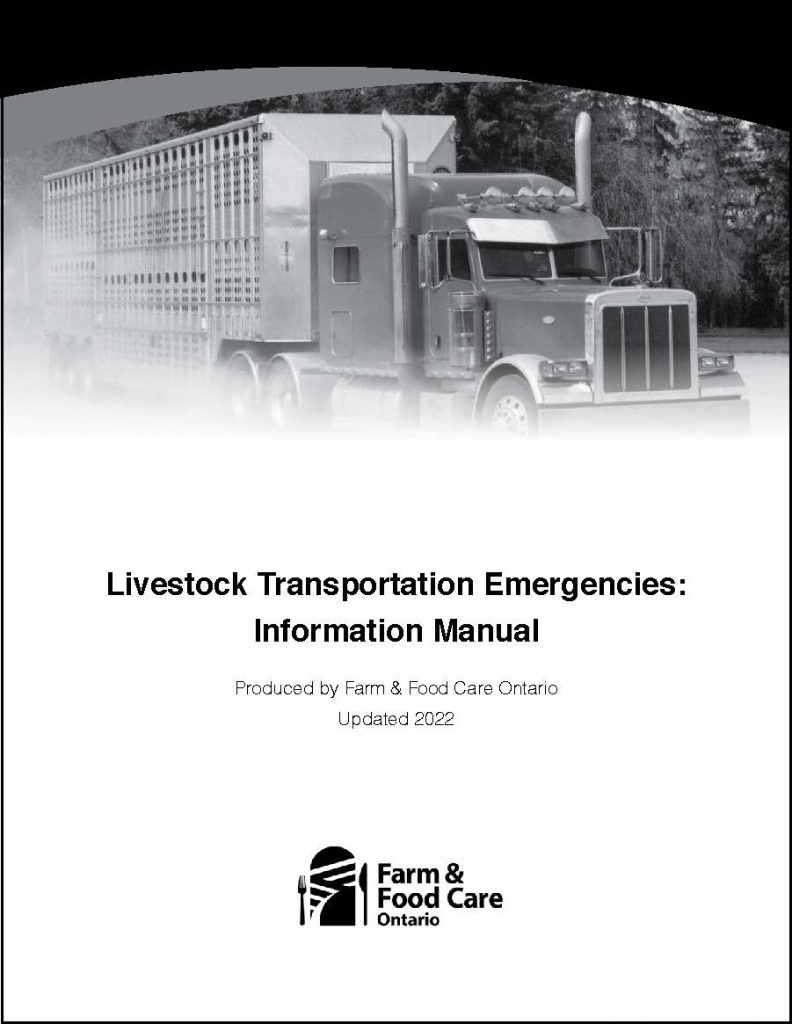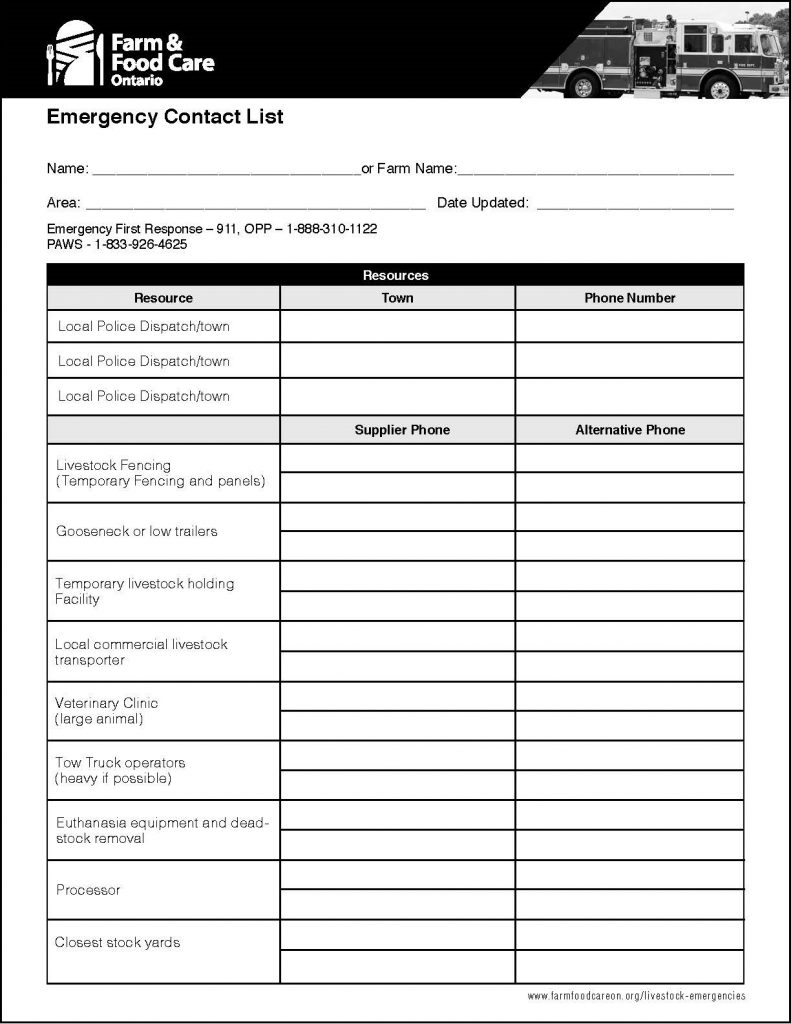Transportation
The updated Health of Animals Regulations Part XII (Transport of Animals) came into effect February 20, 2020. These requirements impact livestock transport in Canada and the movement of young calves.
This Canadian Food Inspection Agency (CFIA) created a number of educational resources, including this checklist, to help you determine if your calves are ready to leave the farm.
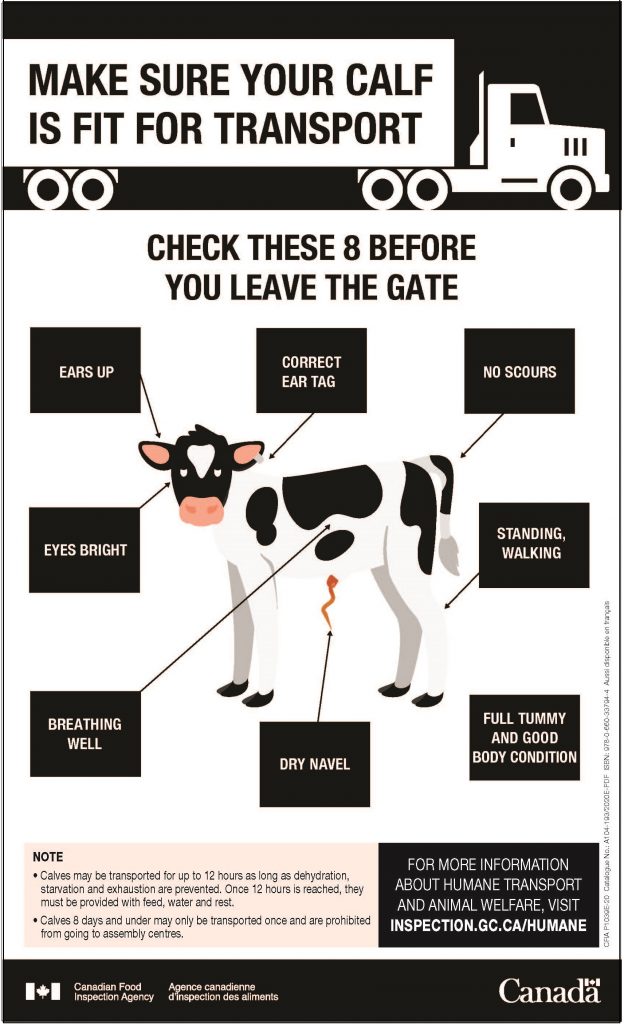
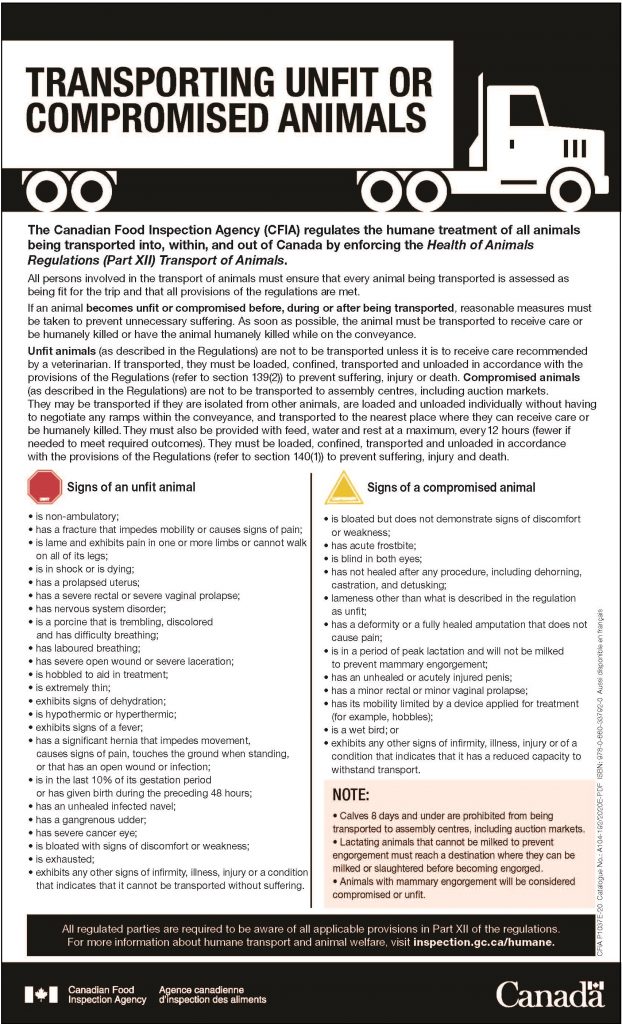
The CFIA has also been working closely with industry, and have drafted fact sheets to reduce confusion around the requirements. If anyone has any questions, please do not hesitate to contact the VFO office for clarification.
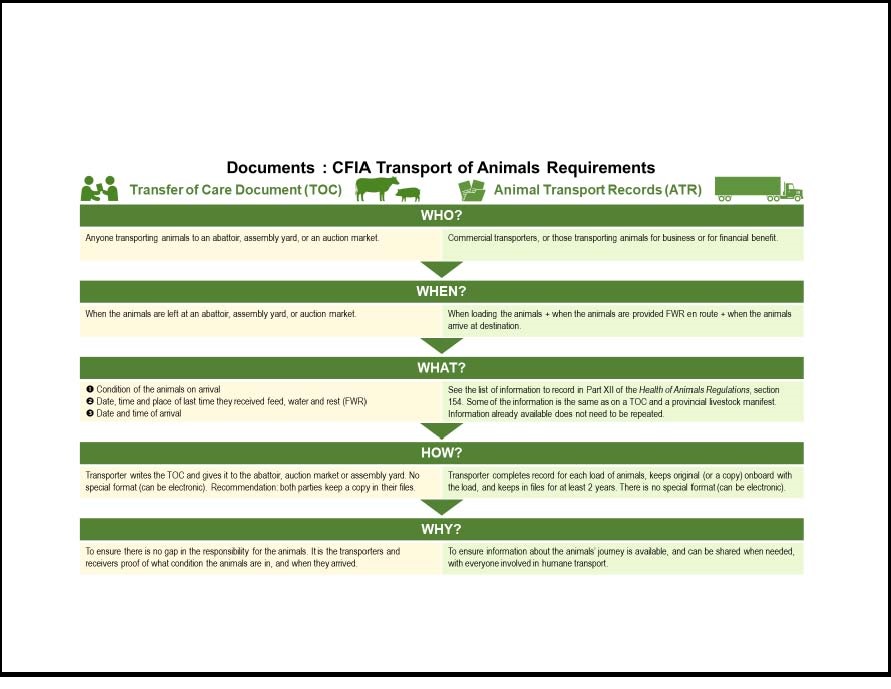
View the Transfer of Care fact sheet here.
View the Animal Transport Record fact sheet here.
More information on the Health of Animals Regulations Part XII (Transport of Animals) operation compliance and enforcement approach can be found here.
Visit their website for more information on humane transport and animal welfare in Canada.
Record-keeping templates
For producers looking for documentation that complies with the Health of Animals Regulations Part XII: Transport of Animals, VFO customized the Animal Transport Record for the shipment of veal cattle. After consultation with producers, the Veal Cattle Transport Record has now been updated to provide an easier way to give packers further assurances of on-farm food safety.
Find the standard record here and the detailed record here.
VFO reminds all producers that the document needs to be filled out and sent with each load, and to work with your packer to determine which version you need.
Record-keeping templates for the Verified Veal Program can be found here.
Assessing lameness for transport
The CFIA has published an infographic for Assessing lameness for transport. This tool has been prepared to clarify the decision-making process when assessing lameness before loading animals for transport.
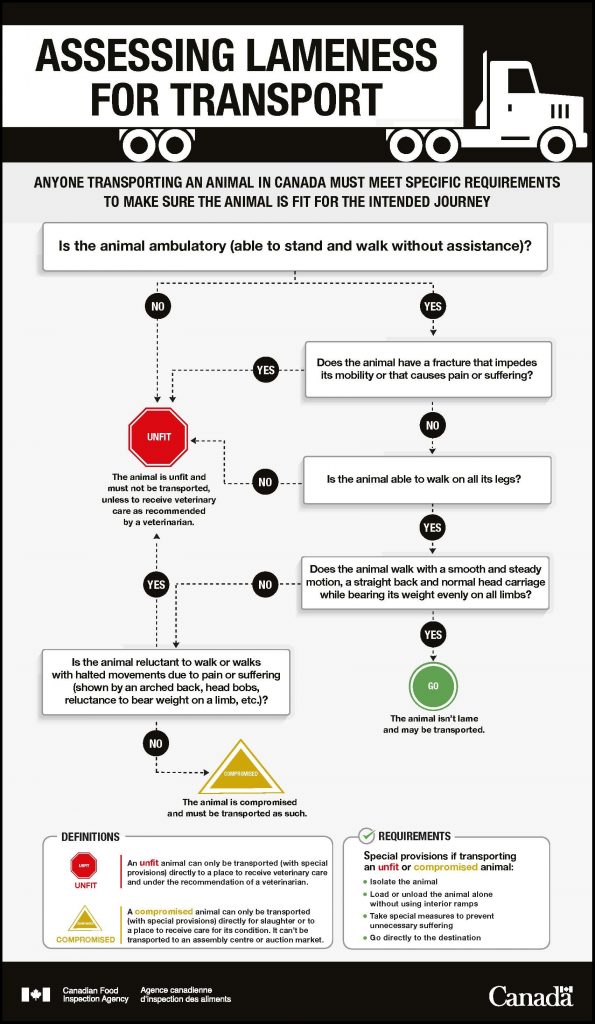
Emergency preparedness
Farm & Food Care Ontario have developed a Livestock Transportation Emergency Manual and Emergency Contact List, designed for farmers who truck their own livestock and smaller livestock truckers who travel regular routes. Under Part XII of the Health of Animals Regulations, owners of transport companies or farmer truck drivers must have contingency plans to manage unforeseen delays or circumstances, including accidents. The Emergency Contact List would be useful for First Responders (and others) as an advanced planning tool to identify resources in your area that could be called upon in the event of a livestock transport accident.
Veal cattle transport
For more information, visit the Beef Cattle Research Council’s website here to read “Handle Animals with Care to Prevent Stress.”
Find more information about loading densities in Appendix 2 Density Charts of the Recommended code of practice for the care and handling of farm animals: Transportation here.
Find more information about manure/mud tag scoring veal cattle in the Grain-fed Veal Fact Sheet “Keeping veal cattle clean” here.
